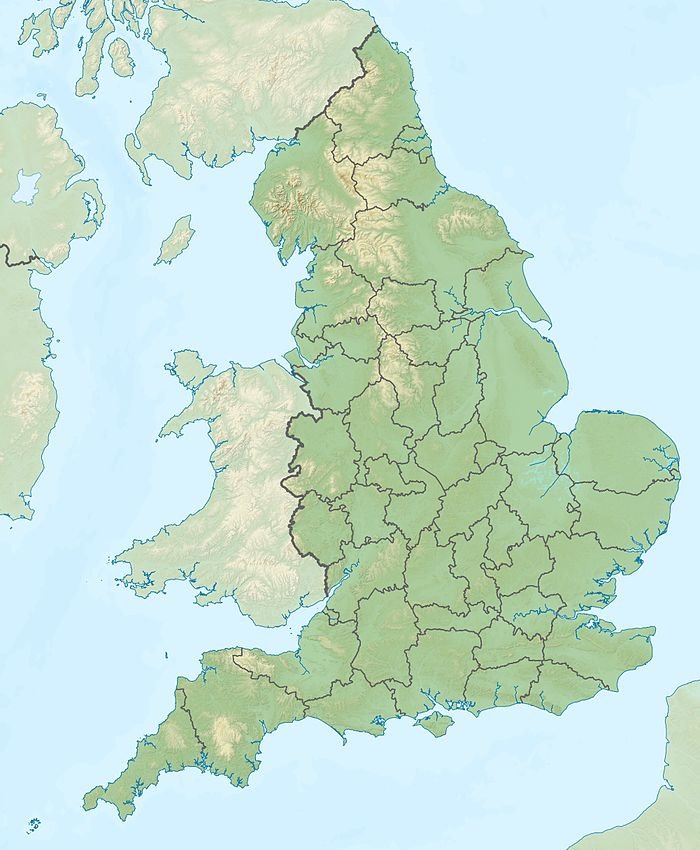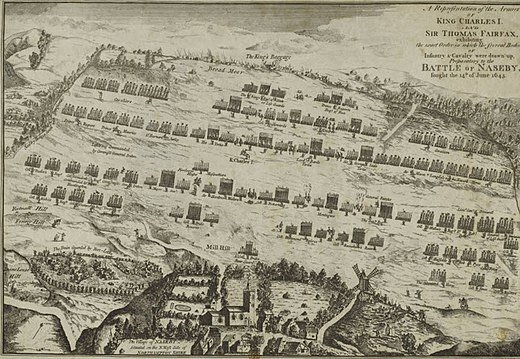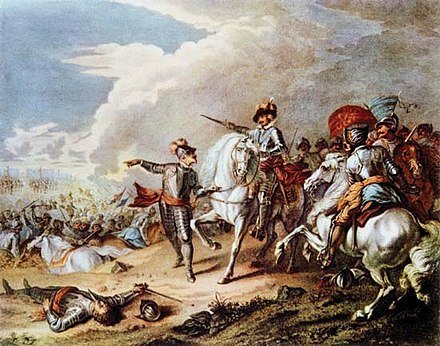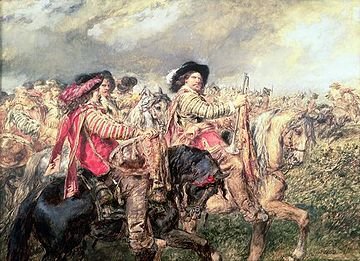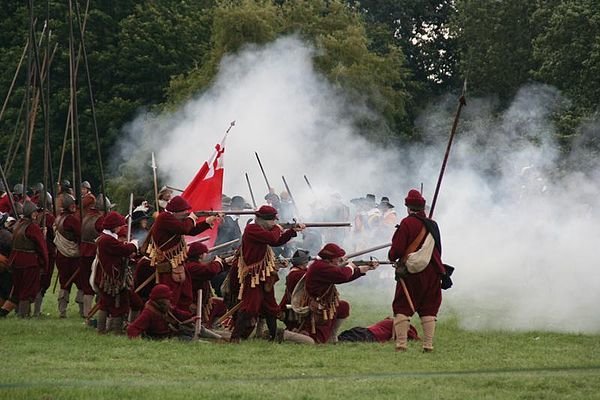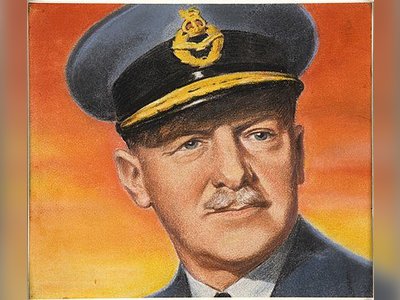British Heritage
Remember, Cherish, Learn.
beta
Battle of Naseby
The Turning Point in British History.
The Battle of Naseby, a decisive clash during the First English Civil War, indisputably altered the trajectory of British history. Taking place on 14 June 1645 near the village of Naseby in Northamptonshire, this battle marked a critical turning point in the conflict, precipitating the ultimate downfall of the Royalist cause. It is therefore central to understanding Britain's transition from monarchy to Commonwealth.
The Civil War in England was a bitter power struggle between the monarch, King Charles I, and Parliament. By 1645, the conflict had seen a variety of outcomes in various skirmishes and battles, with neither side able to secure a definitive victory.
A pivotal change came in late 1644 when Parliament introduced the Self-denying Ordinance. The ordinance effectively removed military officers who were also members of Parliament, leading to the creation of the New Model Army. This innovative, centralised force combined professional soldiers under the command of Sir Thomas Fairfax and Oliver Cromwell, marking a radical shift in the structure and strategy of Parliament's military forces.
In April 1645, the New Model Army set out west to relieve the Parliamentarian stronghold of Taunton, before being diverted to besiege Oxford, the Royalist wartime capital. The Royalists, commanded by Charles I and Prince Rupert, seized the opportunity to storm the Parliamentarian-held town of Leicester. This move spurred Parliament to command Fairfax to abandon the Oxford siege and face the Royalists directly. It was a daring decision given that the Royalist forces outnumbered the Parliamentarian army. However, Fairfax and Cromwell were keen to test the mettle of their newly formed New Model Army.
On 14 June 1645, the two armies met near Naseby. The Royalists initially held a strong position on a ridge, but a strategic redeployment of the Parliamentarian troops tempted the Royalists to engage. The battle saw Rupert's Royalist cavalry initially gain the upper hand over Ireton's Parliamentarian cavalry, but a failure to rally and re-engage left them at a disadvantage. Meanwhile, the Parliamentarian right wing under Cromwell successfully countered the Royalist Northern Horse, freeing them to attack the Royalist infantry.
Caught in a crossfire and flanked by Cromwell's cavalry, the Royalist infantry suffered heavy casualties. Despite a gallant resistance from Rupert's "Bluecoats," the Royalist centre ultimately collapsed under the relentless Parliamentarian assault. An attempt by King Charles I to lead a counter-attack was thwarted, and the remaining Royalist forces were put to flight.
The aftermath of the battle was brutal, with the Parliamentarian forces pursuing the fleeing Royalists, leading to additional casualties. The Royalists' defeat was catastrophic. They suffered over 1,000 casualties, with over 4,500 infantry captured, and lost all their artillery and stores. The battle effectively decimated the Royalist army, leaving them unable to field an army of comparable quality for the remainder of the war.
The Battle of Naseby carries immense significance in British heritage. It marked the definitive turning point in the First English Civil War, representing a fatal blow to the Royalist cause and heralding the eventual rise of the Commonwealth under Oliver Cromwell. The Parliamentarian victory at Naseby, facilitated by the superior organisation and tactical foresight of the New Model Army, led to the end of absolute monarchical power in Britain.
The battle also represented a broader shift in military strategy. The successful deployment of the New Model Army cemented the concept of a standing, professional army, fundamentally changing the nature of British military forces moving forward.
Moreover, the capture of King Charles I's personal baggage during the battle revealed his attempts to seek foreign assistance for the war, dealing a serious blow to his legitimacy. The publication of these correspondences in the pamphlet titled "The King's Cabinet Opened" was a propaganda victory for Parliament, strengthening its cause in the public eye.
Today, the Battle of Naseby stands as a poignant reminder of a period of bitter civil strife and a turning point in the British struggle for power between monarchy and Parliament. As such, it remains a vital piece of the rich tapestry that constitutes Britain's historical heritage.
Historical Context and the Making of the New Model Army
The Civil War in England was a bitter power struggle between the monarch, King Charles I, and Parliament. By 1645, the conflict had seen a variety of outcomes in various skirmishes and battles, with neither side able to secure a definitive victory.
A pivotal change came in late 1644 when Parliament introduced the Self-denying Ordinance. The ordinance effectively removed military officers who were also members of Parliament, leading to the creation of the New Model Army. This innovative, centralised force combined professional soldiers under the command of Sir Thomas Fairfax and Oliver Cromwell, marking a radical shift in the structure and strategy of Parliament's military forces.
The March to Naseby
In April 1645, the New Model Army set out west to relieve the Parliamentarian stronghold of Taunton, before being diverted to besiege Oxford, the Royalist wartime capital. The Royalists, commanded by Charles I and Prince Rupert, seized the opportunity to storm the Parliamentarian-held town of Leicester. This move spurred Parliament to command Fairfax to abandon the Oxford siege and face the Royalists directly. It was a daring decision given that the Royalist forces outnumbered the Parliamentarian army. However, Fairfax and Cromwell were keen to test the mettle of their newly formed New Model Army.
The Crucial Battle
On 14 June 1645, the two armies met near Naseby. The Royalists initially held a strong position on a ridge, but a strategic redeployment of the Parliamentarian troops tempted the Royalists to engage. The battle saw Rupert's Royalist cavalry initially gain the upper hand over Ireton's Parliamentarian cavalry, but a failure to rally and re-engage left them at a disadvantage. Meanwhile, the Parliamentarian right wing under Cromwell successfully countered the Royalist Northern Horse, freeing them to attack the Royalist infantry.
Caught in a crossfire and flanked by Cromwell's cavalry, the Royalist infantry suffered heavy casualties. Despite a gallant resistance from Rupert's "Bluecoats," the Royalist centre ultimately collapsed under the relentless Parliamentarian assault. An attempt by King Charles I to lead a counter-attack was thwarted, and the remaining Royalist forces were put to flight.
The aftermath of the battle was brutal, with the Parliamentarian forces pursuing the fleeing Royalists, leading to additional casualties. The Royalists' defeat was catastrophic. They suffered over 1,000 casualties, with over 4,500 infantry captured, and lost all their artillery and stores. The battle effectively decimated the Royalist army, leaving them unable to field an army of comparable quality for the remainder of the war.
Legacy and Impact on British Heritage
The Battle of Naseby carries immense significance in British heritage. It marked the definitive turning point in the First English Civil War, representing a fatal blow to the Royalist cause and heralding the eventual rise of the Commonwealth under Oliver Cromwell. The Parliamentarian victory at Naseby, facilitated by the superior organisation and tactical foresight of the New Model Army, led to the end of absolute monarchical power in Britain.
The battle also represented a broader shift in military strategy. The successful deployment of the New Model Army cemented the concept of a standing, professional army, fundamentally changing the nature of British military forces moving forward.
Moreover, the capture of King Charles I's personal baggage during the battle revealed his attempts to seek foreign assistance for the war, dealing a serious blow to his legitimacy. The publication of these correspondences in the pamphlet titled "The King's Cabinet Opened" was a propaganda victory for Parliament, strengthening its cause in the public eye.
Today, the Battle of Naseby stands as a poignant reminder of a period of bitter civil strife and a turning point in the British struggle for power between monarchy and Parliament. As such, it remains a vital piece of the rich tapestry that constitutes Britain's historical heritage.
- Battle of Nasebyen.wikipedia.org
